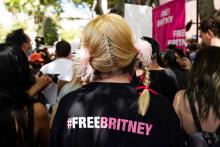Arts & Culture
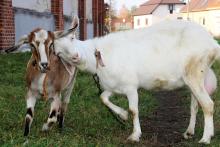
While living on a farm in Georgia, I signed up to take care of the goats. It was the only farm chore that allowed me to sleep in. The duties were odd and specific: I had to check their butts for signs of dysentery and their eyes — which, like sheep, can see in every direction at the same time — for infection. For weeks, I fed one goat a whole head of molasses-soaked garlic every day to cure her of mastitis. But mainly, I just counted them. Which is harder to do than you might imagine.
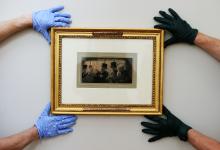
I have always been fascinated by heists. Maybe it was a youthful desire to sneak out and trick my parents (a desire that led me to failure every single time). Maybe is was the bravado and beauty of Neal Caffrey (played by Matt Bomer) on White Collar. Whatever it was, it was a fascination I put to rest as I matured to value integrity and simplicity.
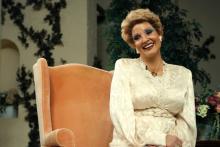
A biopic about Tammy Faye Messner, better known as Tammy Faye Bakker, is ripe for caricature. That face, covered with a rainbow of lipstick, eyeliner, and mascara. That voice, with its exaggerated Upper Midwest accent. Those televangelism broadcasts, where puppet shows and hymns were followed by direct pleas for money from Tammy Faye and her first husband, Jim Bakker. She’s an easy figure to ridicule. But The Eyes of Tammy Faye, a new biopic that shares its name with Fenton Bailey and Randy Barbato’s 2000 documentary, blessedly avoids this trap.
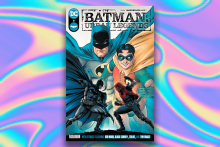
On launch day, Meghan Fitzmartin, one of the writers for the issue (along with Joshua Williamson, Matthew Rosenberg, and Chip Zdarsky) tweeted, “My goal in writing has been and will always be to show just how much God loves you. You are so incredibly loved and important and seen…”
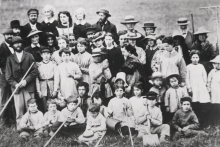
I often think about utopias as I unload the dishwasher.
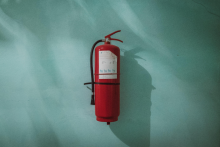
How we respond to an emergency says a lot about who we are. This week, faith-based groups started organizing for disaster relief before Hurricane Ida even made landfall, while health clinics in Texas did their best to help everyone they could before a new law imposed a state-wide ban on abortions.

With his knife, brightly colored paper, and the meditations of his heart, Benjamin PowerGriffin cuts “what prayer feels like, or what I yearn for it to feel like,” he said.
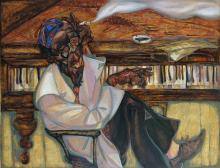
The only solution to this noisy world is good noise from people who are attuned to the world’s hurt.

Lost in much of the promotional hype leading up to Solar Power was the quiet news that in the interim between her previous album and her latest, Lorde had started therapy. Famously private, she didn’t share much more than that, but she doesn’t need to — and anyway, the new sonic landscape of the album speaks for itself. Whereas the propulsive and explosive beats of Melodrama mirrored the rhythm of thoughts racing out of your control, the bubbly basslines of Solar Power reflect the steady progression of growth she’s experienced in the years since.

Whenever I am writing, editing, or reading, it feels wrong to be without a cup of coffee (black, no sugar). I know I am not the only editor who feels this way. [Editor’s note: Can confirm] Also, I feel confident in speaking for the editorial team when I say the 10 stories we have picked for you this week are best enjoyed with a piping-hot cup of joe.
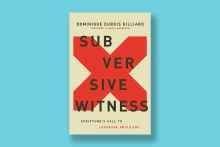
Questions to help you use your privilege for the flourishing of all.

Christianity leaves a lot to interpretation — both biblically and apparently, culinarily.
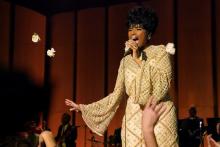
Respect is a must-see work, moving in its revelation of a superstar whose glow many of us have seen, the shadows surrounding them more hidden from view. Ms. Franklin was not just an incredible singer but also a civil rights activist like her father.

The absurd hope found in Zillow-ing during the pandemic.
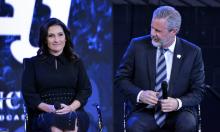
While the show's gossipy tone offers an entertaining portrait of the affection Falwell and his wife had for, shall we say, the things of this world, listeners may find themselves wanting more. I know I did.

Change happens constantly, mostly without a second thought: The moon changes its phase ever gradually. We change from sleeping to waking. I changed this introduction after receiving edits from my colleagues.
But when change — good or bad — does catch our individual or collective attention, it often presents challenges.
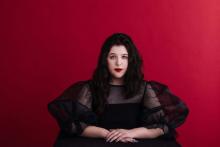
Home Video is not a Christian album, but I didn’t really want it to be. There are songs for VBS, but these are songs about VBS. We need both.
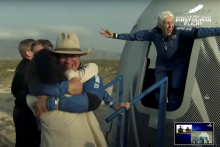
There’s more than one way to tell a story. As journalists, we know this well. As readers, you know this well. The news this week gave us ample opportunities to remember that stories can be told with different — sometimes even contradictory — purposes.
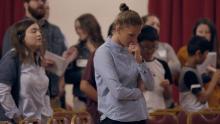
The spiritual and psychological harm of conversion therapy is indeed intense. Rodgers gives an insider’s account in her new memoir Outlove and Pray Away, which premieres on August 3. Her survival story will appeal to readers and viewers whether they are LGBTQ and Christian, one or the other, or none of the above.
